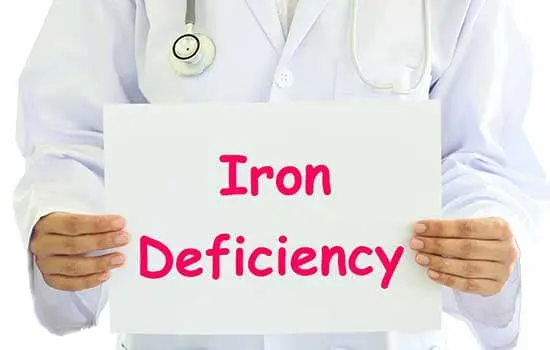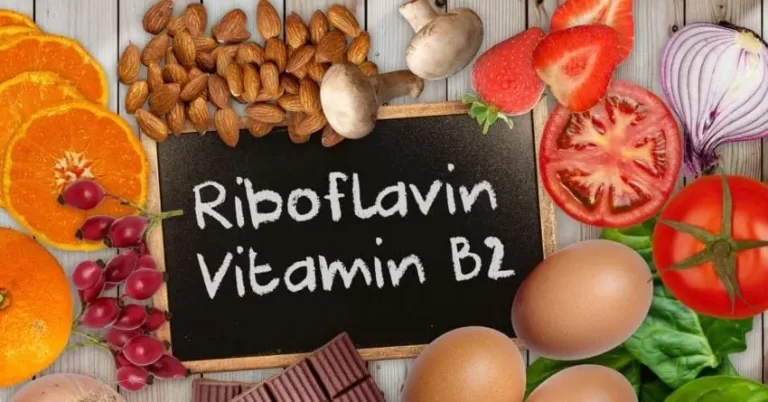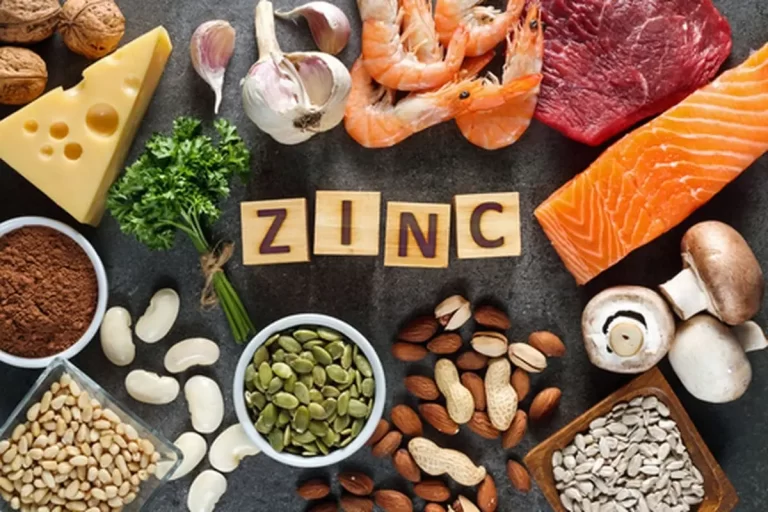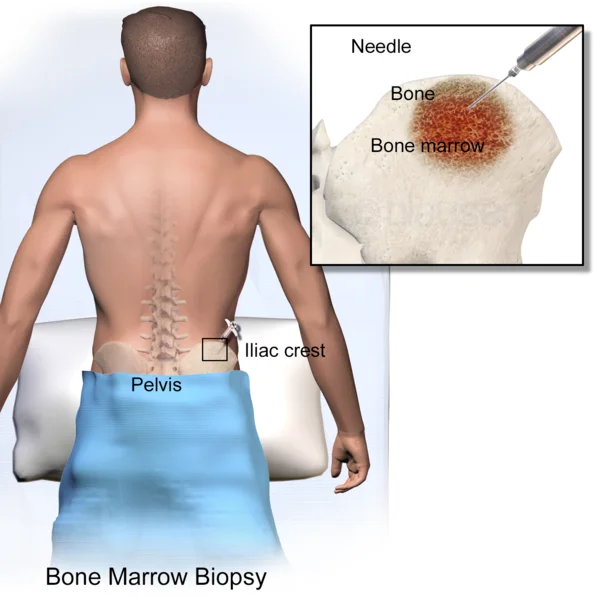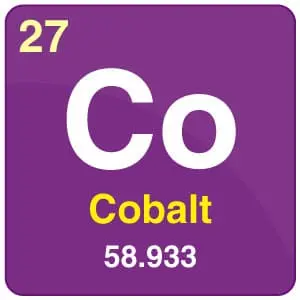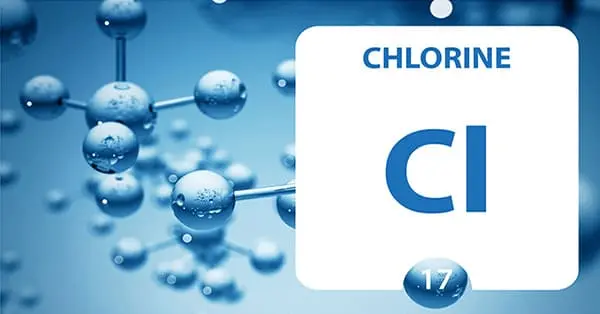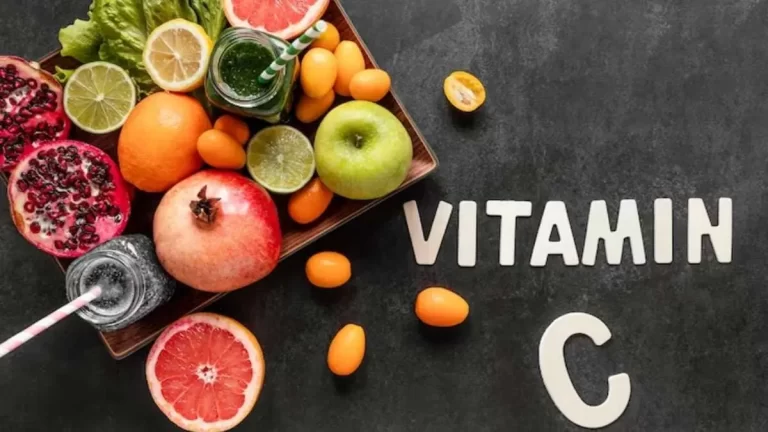Iron Deficiency
What is Iron deficiency?
Iron deficiency, or sideropenia, is the state in which a body lacks adequate iron to meet its demands. Iron is present in every cell in the body and is necessary for several bodily functions.
These include delivering oxygen from the lungs to the tissues as a crucial part of the hemoglobin protein, serving as a channel for the movement of electrons within cells in the form of cytochromes, and stimulating the various human tissues’ oxygen-enzyme interactions.
These essential processes may be hampered by insufficient iron, which can result in illness and even death.
Men’s total body iron is typically 3.8 g, whereas women’s is 2.3 g. Iron is firmly linked to the protein transferrin in blood plasma. The regulation of iron metabolism and prevention of iron shortage are accomplished by many methods.
The gastrointestinal tract houses the primary regulating mechanism. The duodenum, the first part of the small intestine, is where most iron absorption takes place. The absorption of iron may be impacted by dietary variables.
A condition known as iron deficiency gradually takes hold when iron loss is not adequately offset by iron intake from food.
Iron deficiency anemia, a prevalent form of anemia, results from this condition if left untreated. Latent iron deficiency (LID) is the term used to describe the medical state of iron insufficiency without anemia that exists prior to anemia.
Inadequate hemoglobin or red blood cells (erythrocytes) are the hallmarks of anemia. The body produces less hemoglobin when it does not have enough iron in its system.
The binding of hemoglobin to oxygen allows red blood cells to transport oxygen throughout the body. The disease most commonly affects youngsters, women who are or are not pregnant, and individuals who have bad dietary habits.
The majority of cases of iron-deficiency anemia are minor, but if left untreated, it can lead to issues including irregular heartbeats, pregnancy troubles, and stunted growth in newborns and children, which can have an impact on their behavior and cognitive development.
Signs and Symptoms of Iron Deficiency
Iron deficiency symptoms can manifest prior to the development of iron deficiency anemia. Iron deficiency symptoms are not specific to iron deficiency; that is, they are not pathognomonic.
Many enzymes depend on iron to operate properly, therefore a variety of symptoms might ultimately appear as a secondary outcome of anemia or as other primary outcomes of iron shortage. Iron deficiency symptoms include.
- exhaustion
- feeling lightheaded or dizzy
- paleness with hair loss
- jerks
- brittle or grooved nails, weakness or irritation in the nails
- thinning hair
- Plummer-Vinson syndrome: decreased immunological function;
- excruciating atrophy of the mucous membrane lining the throat, esophagus, and tongue.
- restless legs syndrome (pagophagia)
Anemia and increasing weariness might result from a persistent iron shortage. An increased platelet count, or thrombocytosis, may also ensue. One reason some people are unable to donate blood is because their blood does not contain enough iron.
Signs and Symptoms in Children
- pale skin
- exhaustion
- sluggish development and growth
- inadequate appetite
- reduction in testicular size
- behavioral issues
- unusually quick breathing
- recurring infection
Iron Requirements in Young Children to Teenagers
| Age group | Recommended amount of iron a day |
| 7–12 months | 11 mg |
| 1–3 years | 7 mg |
| 4–8 years | 10 mg |
| 9–13 years | 8 mg |
| 14–18 years, girls | 15 mg |
| 14–18 years, boys | 11 mg |
Causes of Iron Deficiency
- blood loss (iron is included in hemoglobin) contribution
- heavy menstrual flow
- bleeding outside of menstruation
- stomach or colon cancer, hemorrhoids, ulcerative colitis, ulcers, and other gastrointestinal bleeding (anus).
- seldom, bleeding from the respiratory system or laryngology
- chemicals that prevent the body from absorbing iron (in food or medication)
- antibiotics called fluoroquinolones
- malabsorption disorders
- Inflammation is prevalent in many other chronic conditions, like rheumatoid arthritis and inflammatory bowel disease, where it is adaptive to restrict bacterial development in infection.
- parasite infestation
- There are no known hereditary abnormalities of human iron metabolism that directly cause iron shortage, despite studies on genetic anomalies causing an iron deficit in animals.
Athletics
Athletics may be linked to decreased iron levels for a number of causes, including haematuria (blood in the urine), perspiration and urine loss, gastrointestinal blood loss, and mechanical hemolysis (destruction of red blood cells via physical impact).
Even with increased sweat and urine production, the little quantities of iron expelled in these fluids are typically regarded as negligible losses—especially given that the bodies of athletes seem to be conditioned to store iron better.
High-impact sports are the most likely to cause mechanical hemolysis, particularly among runners who cover large distances and develop “foot-strike hemolysis” as a result of repeatedly striking their feet on the ground.
Endurance athletes are the most susceptible to gastrointestinal bleeding brought on by exercise. Haematuria in athletes is more common in individuals who have repetitive bodily impacts, especially to the hands (e.g., Conga or Candombe drumming) and feet (e.g., sprinting on a hard road, or Kendo).
Athletes who compete in weight-loss-focused activities (such as cycling, ballet, gymnastics, marathon running, and jogging) or who follow high-carb, low-fat diets may also be more susceptible to iron deficiency.
Inadequate Intake
According to a federal food consumption study conducted in the United States, the average daily intake of iron from foods and drinks was found to be 13.1 mg for women and 18.0 mg for males over the age of 19.
In the age group of 14 to 50 years, 16% of women and fewer than 3% of males drank less than the Estimated Average Requirement (EAR). In a 2014 U.S. government study, consumption figures were updated and revealed that for both men and women, The average daily consumption of iron for those over the age of 20 was 12.6 mg, compared to 16.6 mg.
The average American diet provides sufficient levels of iron. Subgroups that are more likely to receive less than the EAR include pregnant women, premenopausal women, teenage females, newborns, and small toddlers.
The prevalence of iron insufficiency is further influenced by racial and socioeconomic disparities.
Bioavailability
Because iron is necessary for bacterial development, its bioavailability plays a crucial role in infection management.
Because iron is firmly attached to transferrin in blood plasma, bacteria cannot access it because cells endocytose transferrin and absorb it. This occurs 30 Lactoferrin, an iron-binding protein, makes about 15–20% of the protein in human milk.
As a perspective, in cow’s milk, this is merely 2 percent. Consequently, breastfed Infants are less likely to have infections.
In order to bind iron and prevent germs from growing, lactoferrin is also abundant in saliva, tears, and wounds.
Because egg white contains 12% conalbumin, which protects it against bacteria that penetrate the eggshell, egg white was used to cure illnesses before antibiotics were developed.
In many systemic inflammatory situations, increasing synthesis of hepcidin—primarily secreted by the liver in response to increased production of pro-inflammatory cytokines like interleukin-6—lowers plasma concentrations of iron, which in turn inhibits bacterial growth.
Once the inflammatory cause is addressed, this functional iron deficit will go away; if it doesn’t, it may develop into anemia of chronic inflammation.
Fever, inflammatory bowel disease, infections, chronic heart failure (CHF), carcinomas, or the aftermath of surgery can all contribute to the underlying inflammation.
Because of this connection between bacterial proliferation and iron bioavailability, taking more than 200 mg of oral iron supplements per day results in a relative iron surplus that can change the type of bacteria.
Parenteral iron administration has raised concerns, however, clinical practice hasn’t supported these concerns when bacteremia is present.
Conversely, a little iron shortage can offer defense against acute infection, especially against pathogens that dwell inside hepatocytes and macrophages, such as malaria and TB.
This is especially helpful in areas where regular therapy is unavailable and where the prevalence of certain illnesses is high.
Diagnosis
- The presence of microcytic anemia can be detected by a complete blood count, even in cases where iron shortage develops into iron deficiency anemia.
- reduced ferritin levels in serum
- low blood iron levels
- high total iron binding capacity (TIBC), albeit this can also be enhanced in chronic inflammation-related anemia.
- If gastrointestinal bleeding is the cause of iron deficiency, the fecal occult blood test may come back positive; however, due to the test’s sensitivity,
it may also come back negative in some situations even in cases where enteral blood loss occurs.
As usual, laboratory data must be interpreted taking into account all characteristics of each unique clinical scenario as well as the lab’s reference values.
A normal serum ferritin level may not always rule out iron deficiency since it might be raised under inflammatory situations. Therefore, it is useful to take a concurrent C-reactive protein (CRP) supplement to increase its usefulness.
The condition determines what constitutes a “high” amount of serum ferritin. For instance, the threshold in inflammatory bowel illness is 100, but the values in chronic heart failure (CHF) are 200.
Treatment of Iron Deficiency
The underlying cause of iron deficiency should be thoroughly diagnosed before therapy is started. This is especially true for elderly people, who are more vulnerable to the gastrointestinal bleeding that colorectal cancer frequently produces.
In adulthood, gastrointestinal issues may be the underlying cause of persistent blood loss in 60% of people with iron-deficiency anemia.
Treatment for the iron deficiency’s underlying cause is probably required as well. Iron supplements can be used to treat the illness once it has been diagnosed.
The severity of the ailment, the need for quick recovery (for example, in the case of elective surgery), and the chance that treatment would be successful (for example, in cases where the patient has underlying IBD, is receiving dialysis, or is receiving ESA therapy) will all influence the supplement selection.
Ferrous gluconate, amino acid chelate tablets, and ferrous sulfate are a few common forms of oral iron.
According to a recent study, the replacement dose of iron may be as low as 15 mg of elemental iron per day, at least for older individuals with iron insufficiency.
Intravenous (IV) iron infusion therapy for IBD-related anemia may be more successful than oral iron therapy in treating the condition, according to low-certainty data, and fewer patients may need to discontinue treatment early due to side effects.
The kind of iron preparation used might have a significant impact on the therapeutic effect. Despite very low confidence evidence of greater side effects.
Including bleeding, in patients getting ferric carboxymaltose treatment, moderate-certainty data shows responsiveness to treatment may be stronger when IV ferric carboxymaltose, rather than IV iron sucrose preparation, is used.
Oral and IV forms of ferric maltol—also known as Accrufer and Ferracru—are accessible. Very low confidence evidence points to a significant effect of oral ferric maltol over placebo when treating IBD-related anemia.
It was unclear, nevertheless, if the IV preparation worked better than ferric maltol taken orally. In patients with chronic renal disease, a Cochrane review of controlled trials comparing oral iron supplements with intravenous (IV).
Iron therapy showed low-certainty evidence that recipients of IV iron therapy were 1.71 times more likely to meet their goal hemoglobin levels.
Hemoglobin was generally 0.71g/dl higher in individuals who received oral iron supplementation. Serum ferritin measurements of the liver’s iron reserves revealed a 224.84 µg/L increase in individuals getting iron through IV.
Nevertheless, there was also evidence with low certainty that allergic responses were more likely to occur after receiving IV iron treatment.
It was unknown how iron treatment was administered and if this would change the number of patients who could need dialysis or blood transfusions, or if it would influence the risk of mortality from any cause, including cardiovascular disease.
Food Sources
By using an iron skillet when cooking and consuming meals high in iron, mild iron insufficiency can be avoided or treated.
Most plants and animals need iron, thus it may be found in a variety of meals. Heme iron is found in good sources of dietary iron because it is the most readily absorbed and is not blocked by other dietary components or medications.
Poultry and red meat are two examples. Iron is present in non-heme sources but with a lower bioavailability. Tofu, pistachios, legumes, beans, green vegetables, fortified bread, and fortified breakfast cereals are a few examples.
The body processes and absorbs iron differently from different meals. For example, the body absorbs iron from meat (a heme iron source) more readily than from cereals and vegetables (also known as “non-heme” iron sources).
Iron absorption from a concurrent meal type may be impeded by minerals and compounds present in one food type. For instance, insoluble complexes including phytic acid and oxalates bind iron in the stomach before it can be absorbed.
A vegetarian or vegan should have a slightly greater total daily intake of iron than someone who eats meat, fish, or poultry because iron from plant sources is less readily absorbed than heme-bound iron from animal sources.
For vegetarians and vegans, legumes and dark-green leafy vegetables such as broccoli, kale, and Asian greens are particularly rich sources of iron.
But oxalates, found in spinach and Swiss chard, bind iron and virtually prevent it from being absorbed.[Reference required] Iron derived from non-heme sources is more easily absorbed when eaten with either heme-bound iron or vitamin C.
This is because iron absorption is boosted by a “meat factor” that has been hypothesized. It’s unclear if consuming spices or condiments enhanced with iron can aid those who are iron deficient.
There is some evidence that spices or condiments with added iron may assist in lowering iron deficiencies; however, it is unclear if this improves health or keeps anemia from occurring.
The foods that are highest in heme and non-heme iron are included in the two tables that follow. The USDA Recommended Dietary Allowance of 18 mg for women between the ages of 19 and 50 is the basis for the “% guideline” column.
| Food | Serving size | Iron | % guideline |
| clam[a] | 100g | 28 mg | 155% |
| pork liver | 100g | 18 mg | 100% |
| lamb kidney | 100g | 12 mg | 69% |
| cooked oyster | 100g | 12 mg | 67% |
| cuttlefish | 100g | 11 mg | 60% |
| lamb liver | 100g | 10 mg | 57% |
| octopus | 100g | 9.5 mg | 53% |
| mussel | 100g | 6.7 mg | 37% |
| beef liver | 100g | 6.5 mg | 36% |
| beef heart | 100g | 6.4 mg | 35% |
| Food | Serving size | Iron | % guideline |
| raw yellow beans | 100g | 7 mg | 35% |
| spirulina | 15g | 4.3 mg | 24% |
| falafel | 140g | 4.8 mg | 24% |
| soybean kernels | 125ml=1/2cup | 4.6 mg | 23% |
| spinach | 125g | 4.4 mg | 22% |
| lentil | 125ml=1/2cup | 3.5 mg | 17.5% |
| treacle (CSR Australia) | 20ml=1Tbsp | 3.4 mg | 17% |
| molasses (Bluelabel Australia) | 20ml=1Tbsp | 1.8 mg | 9% |
| candied ginger root | 15g~3p | 1.7 mg | 8.5% |
| toasted sesame seeds | 10g | 1.4 mg | 7% |
| cocoa (dry powder) | 5g~1Tbsp\ | 8 mg | 4% |
Food Recommendations for Children
Solid food containing enough iron, which can be present in both heme and non-heme iron, should be given to infants as early as six months of age.
Heme Iron:
- Red meat (such as venison, goat, lamb, hog, or beef)
- fatty fish
- poultry, such as turkey or chicken
- Eggs
Non-Heme Iron:
- Fortified infant cereals with iron
- Tofu
- Lentils with beans
- dark-green, leafy veggies
If an iron deficiency has become symptomatic, an iron supplement is frequently required since iron deficiency can have major health repercussions that diet alone may not be able to rapidly address.
Blood Transfusion
Hemodynamic instability associated with iron deficiency can occasionally be treated with blood transfusions. People with chronic iron deficiency or those scheduled for surgery may occasionally be considered for transfusions; nevertheless, even in these cases, oral therapy or intravenous iron should be administered.
Intravenous Iron Therapy for Non-Anaemic, Iron-Deficient Adults
There is not enough data available at this time to support suggestions that intravenous iron therapy is a good treatment for individuals who are iron deficient but not anaemic. The existing body of data in this field is of very low quality, necessitating further investigation.
Cancer Research
Helicobacter pylori can reduce the threshold for the development of gastric cancer and promote inflammation in the stomach. Premalignant lesions and more severe inflammation are brought on by H. pylori when there is an iron deficit.
This inflammatory impact seems to be partially mediated by altered synthesis of bile acids, such as a rise in deoxycholic acid, a secondary bile acid linked to several conditions, including colon cancer.
FAQ
What happens when your iron is low?
Pale complexion and chilly hands and feet could be apparent. Additionally, iron-deficiency anemia may result in lightheadedness or vertigo. Shortness of breath, an accelerated pulse, and chest discomfort are occasionally associated with it. You may experience strange desires for non-food objects like ice, paper, or dirt if you are iron deficient.
How do you fix iron deficiency?
Lean red meat, beans, dried fruits, eggs, iron-fortified breads and cereals, peas, tofu, and dark green leafy vegetables are all excellent sources of iron. Iron absorption is aided by diets high in vitamin C, such as oranges, strawberries, and tomatoes. Ensure that toddlers get enough solid meals that are high in iron.
What can I drink for iron?
Apple juice, apricot nectar, beef broth, beet juice, chocolate made with natural cocoa powder, orange juice, pea protein smoothies, prune juice, tomato juice, and spinach juice are among the beverages high in iron.
Is lack of iron serious?
Untreated iron deficiency anemia can increase your susceptibility to disease and infection because iron deficit impairs immunity. may raise your chance of experiencing heart-related or lung-related problems, such as tachycardia, or unusually rapid heartbeat, or heart failure.
What are the 3 stages of iron deficiency?
Storage iron deficit, iron deficient erythropoiesis, and iron deficiency anemia are the three phases of iron deficiency anemia (1,2). Initially following blood loss, iron body reserves are preferentially used for increased erythropoiesis.
Are bananas high in iron?
Bananas have a low iron level of about 0.4 mg/100 g of fresh weight. The goal is to raise the iron content of bananas by three to six times through the development of modified lines.
Which fruit has iron?
Fruits high in iron include avocados, strawberries, melons, prunes, dates, figs, raisins, dried apricots, and dried peaches. Hemoglobin, a protein found in red blood cells that carries oxygen throughout the body, is made by the body using the mineral iron.

